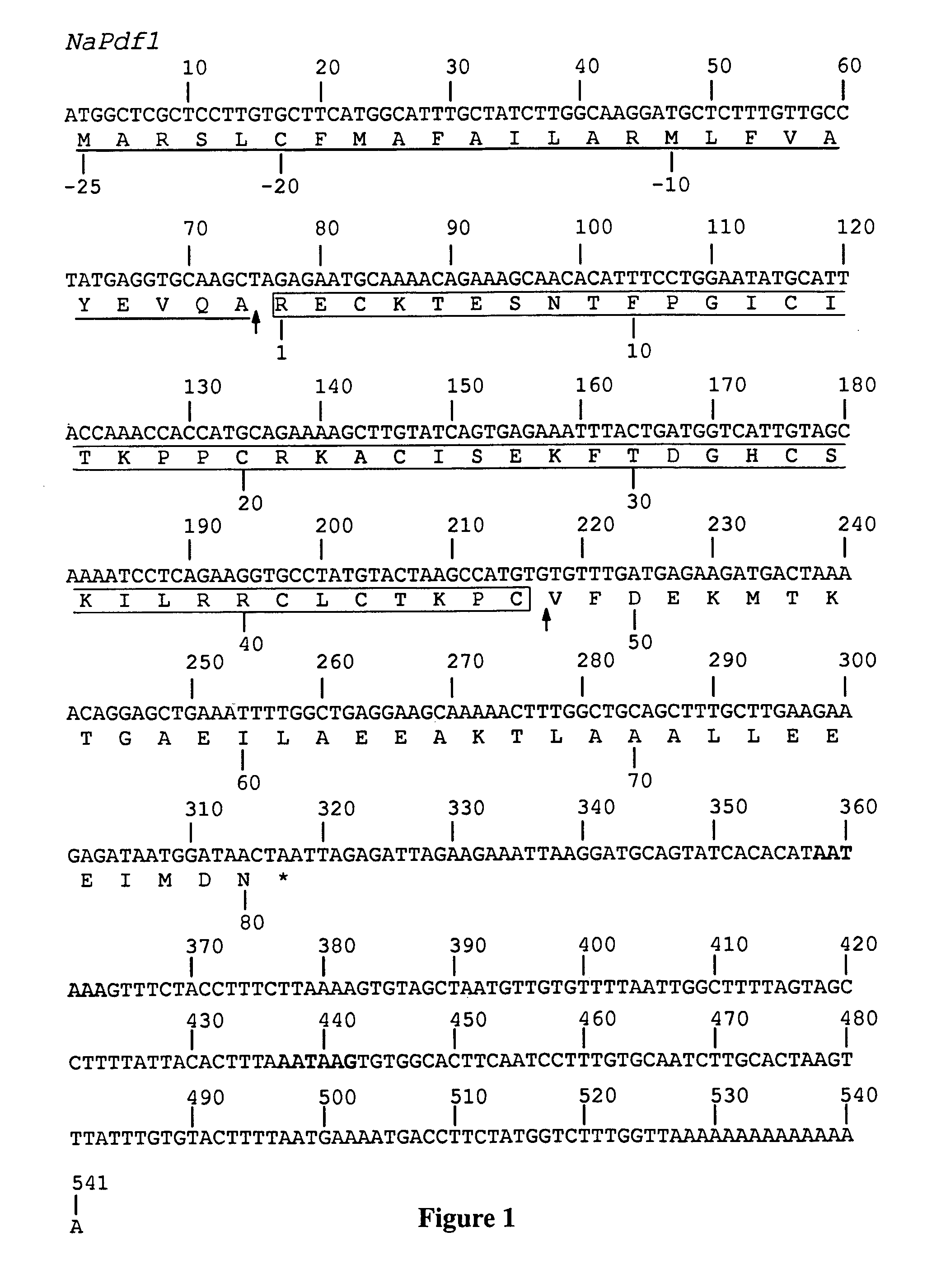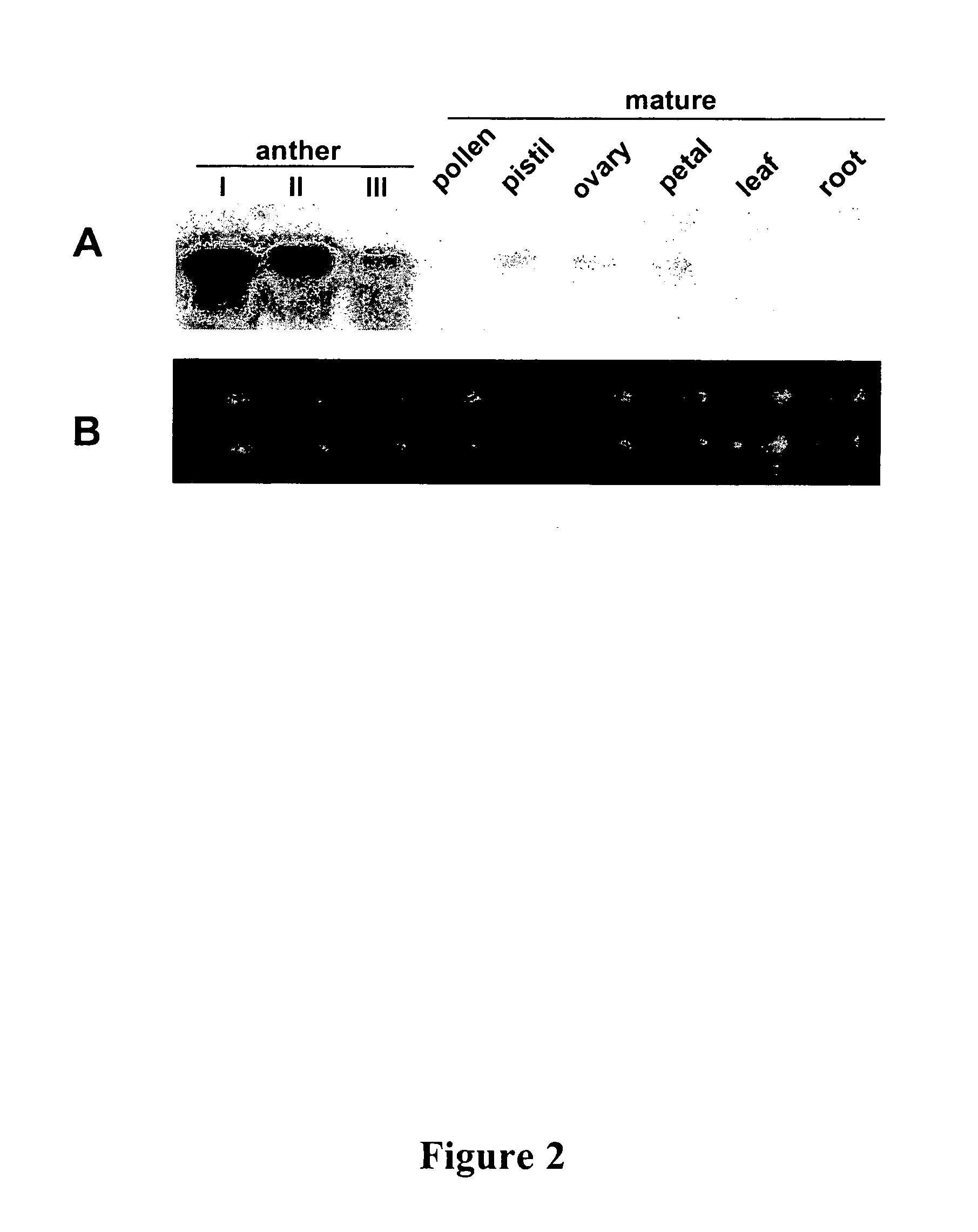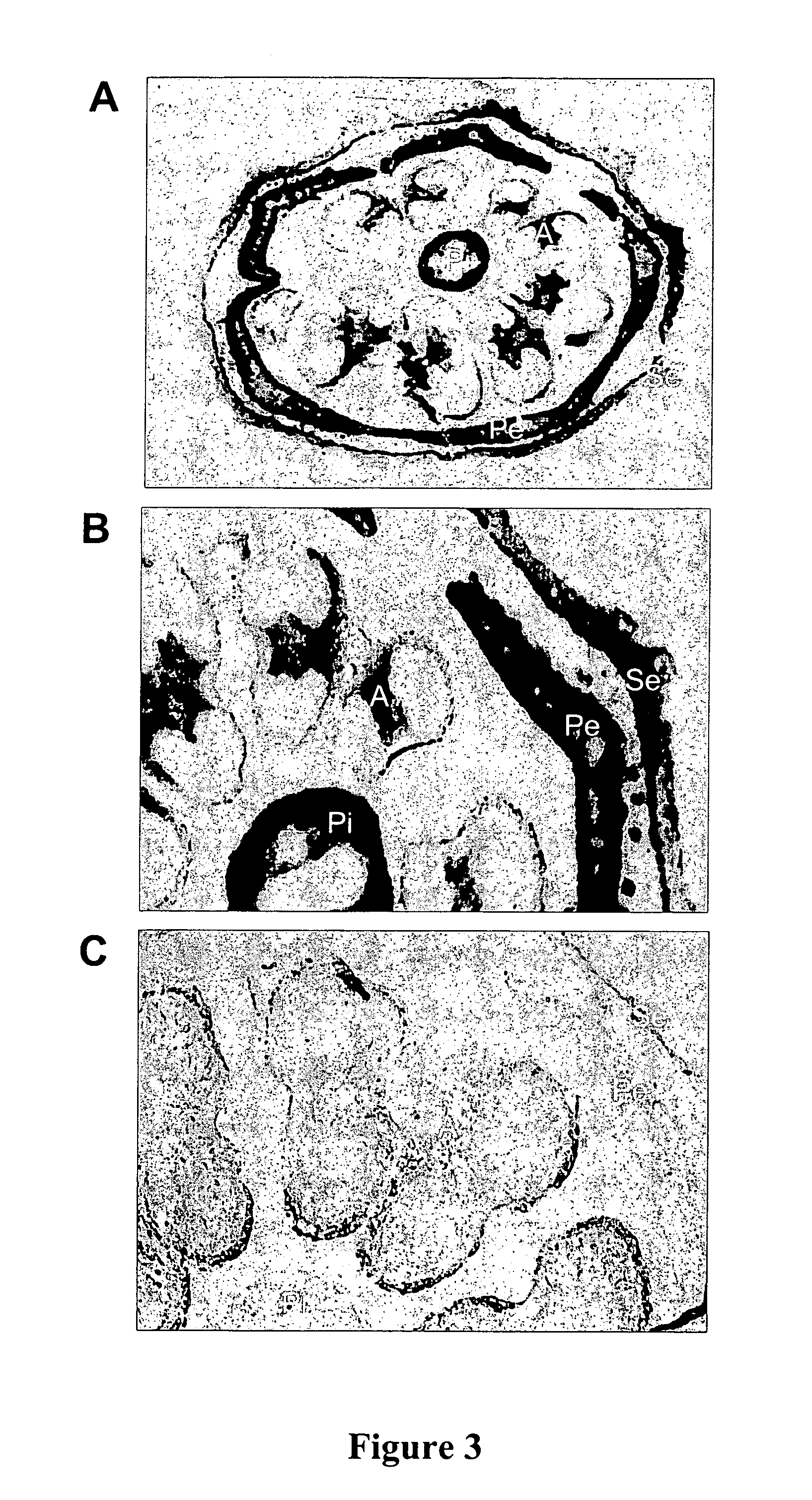Defensin-encoding nucleic acid molecules derived from nicotiana alata, uses therfor and transgenic plants comprising same
a technology of defensin and nucleic acid, applied in the field of gene encoding plant floral defensinlike molecules, can solve the problems of millions of tonnes of lost production, inability to examine the biological function of plants, and inability to control the infestation of insect and other pathogens in plants, etc., to reduce the susceptibility to insect infestation, reduce the sensitivity to attack, and induce resistance in plants or parts.
- Summary
- Abstract
- Description
- Claims
- Application Information
AI Technical Summary
Benefits of technology
Problems solved by technology
Method used
Image
Examples
example 1
Preparation of Plant Material
[0171]Nicotiana alata (Link et Otto) plants of mixed self-incompatibility genotype were maintained under glasshouse conditions as described by Anderson et al. (Plant Cell 1: 483–491, 1989). Flowers and floral buds were harvested and within two hours, pistils, ovaries and anthers were removed with forceps and a scalpel blade, while petals were separated by hand. Pollen grains from dehisced anthers and whole flowers at various stages of development were also collected. The tissues were frozen in liquid nitrogen and stored at −70° C. until use.
example 2
Cloning of cDNA from N. alata
(a) Isolation of RNA
[0172]Total RNA was prepared by grinding 70 pistils (1.3 g) from N. alata flowers at the petal coloration stage of development to a fine powder with a sterile mortar and pestle in the presence of liquid nitrogen. The RNA was extracted with TRIzol (trademark) Reagent (Gibco BRL) according to the manufacturer's instructions (see Gibco BRL form #3796, TRIzol (trademark) Reagent Total RNA isolation reagent).
(b) cDNA Synthesis and Amplification of Floral Defensin Sequence by PCR
[0173]First strand cDNA was prepared from total pistil RNA using the Superscript Preamplification System (Gibco BRL). Oligonucleotide primers used for PCR were specific to the DNA sequence published for the Flower Specific Thionin (FST, Gu et al. [1992; supra] from N. tabacum.
[0174]
Primer FST1:5′ GGAATTCCATATGGCTCGCTCCTTGTGC 3′[SEQ ID NO:1]Primer FST25′ GCGGATCCTCAGTTATCCATTATCTCTTC 3′[SEQ ID NO:2]
[0175]Primer FST1 and primer FST2 matched the sequence of FST betwee...
example 3
NaPdf1 Gene Expression
(a) RNA Gel Blot Analysis
[0177]Total RNA was isolated from anthers at stages I (5–10 mm buds), II (20–30 mm buds) and III (50–70 mm buds) of development, from pollen grains and from mature pistil, ovary, petal, leaf and root tissues of N. alata (self-incompatibility genotype, S2S2). The RNA samples (12.5 μg) were fractionated on a denaturing 1% w / v agarose-formaldehyde gel and transferred to Hybond-N (Amersharn Life Sciences) membrane. Production of a radio-labelled NaPdf1 cDNA probe and hybridization conditions were as described for the screening of the cDNA library, in Example 2(b), above. Stringency washes were in 0.2×SSPE, 0.1% SDS at 45° C. and 55° C. for 30 min, respectively. Results are shown in FIG. 2. Hybridized probe was visualized by exposing the blot to a storage phosphor screen for 24 h. The results were read in a Molecular Dynamics 400B phosphorimager, using the ImageQuant software.
[0178]In situ hybridization was performed...
PUM
| Property | Measurement | Unit |
|---|---|---|
| flow rate | aaaaa | aaaaa |
| temperatures | aaaaa | aaaaa |
| Tm | aaaaa | aaaaa |
Abstract
Description
Claims
Application Information
 Login to View More
Login to View More - R&D
- Intellectual Property
- Life Sciences
- Materials
- Tech Scout
- Unparalleled Data Quality
- Higher Quality Content
- 60% Fewer Hallucinations
Browse by: Latest US Patents, China's latest patents, Technical Efficacy Thesaurus, Application Domain, Technology Topic, Popular Technical Reports.
© 2025 PatSnap. All rights reserved.Legal|Privacy policy|Modern Slavery Act Transparency Statement|Sitemap|About US| Contact US: help@patsnap.com



